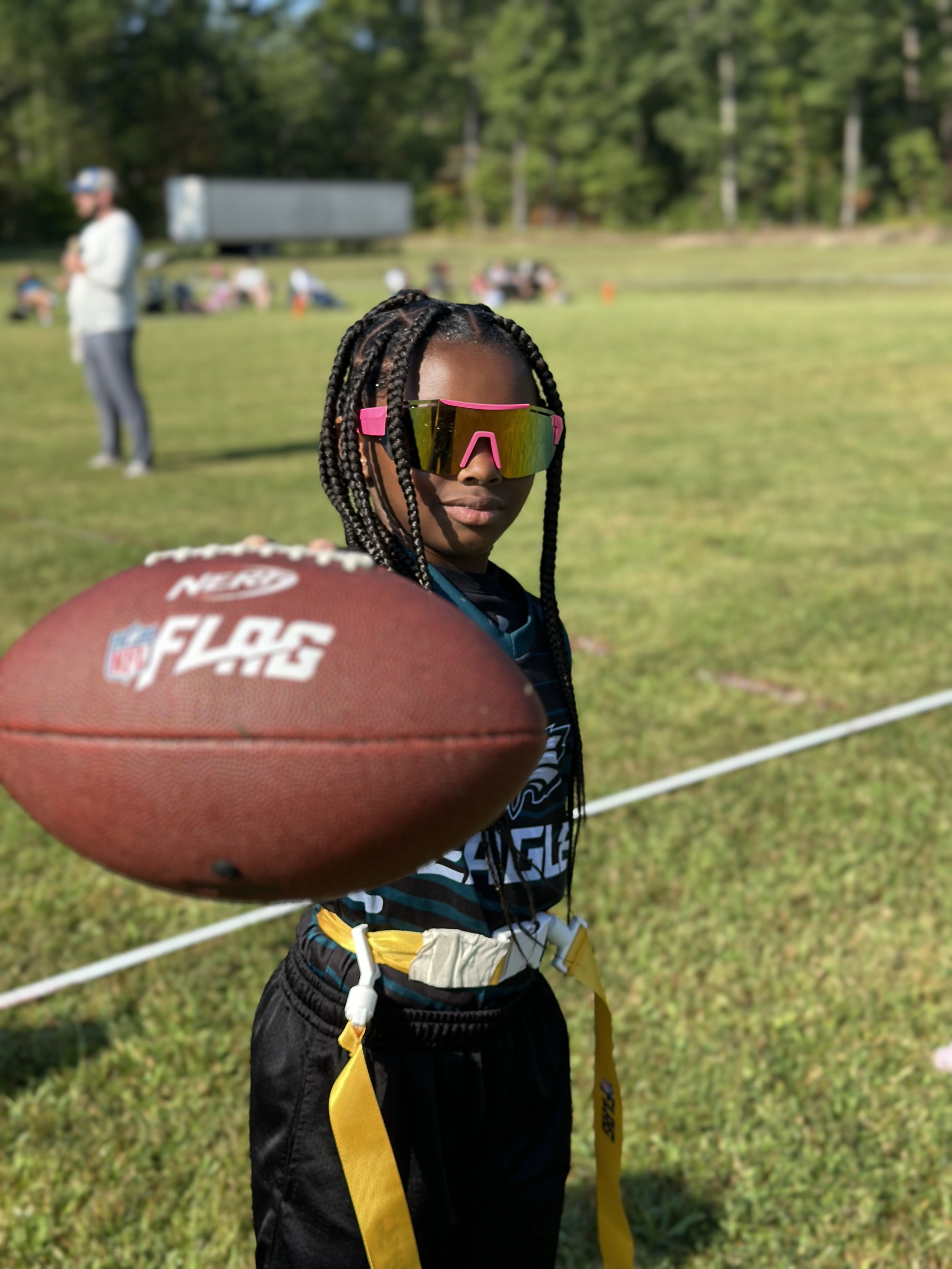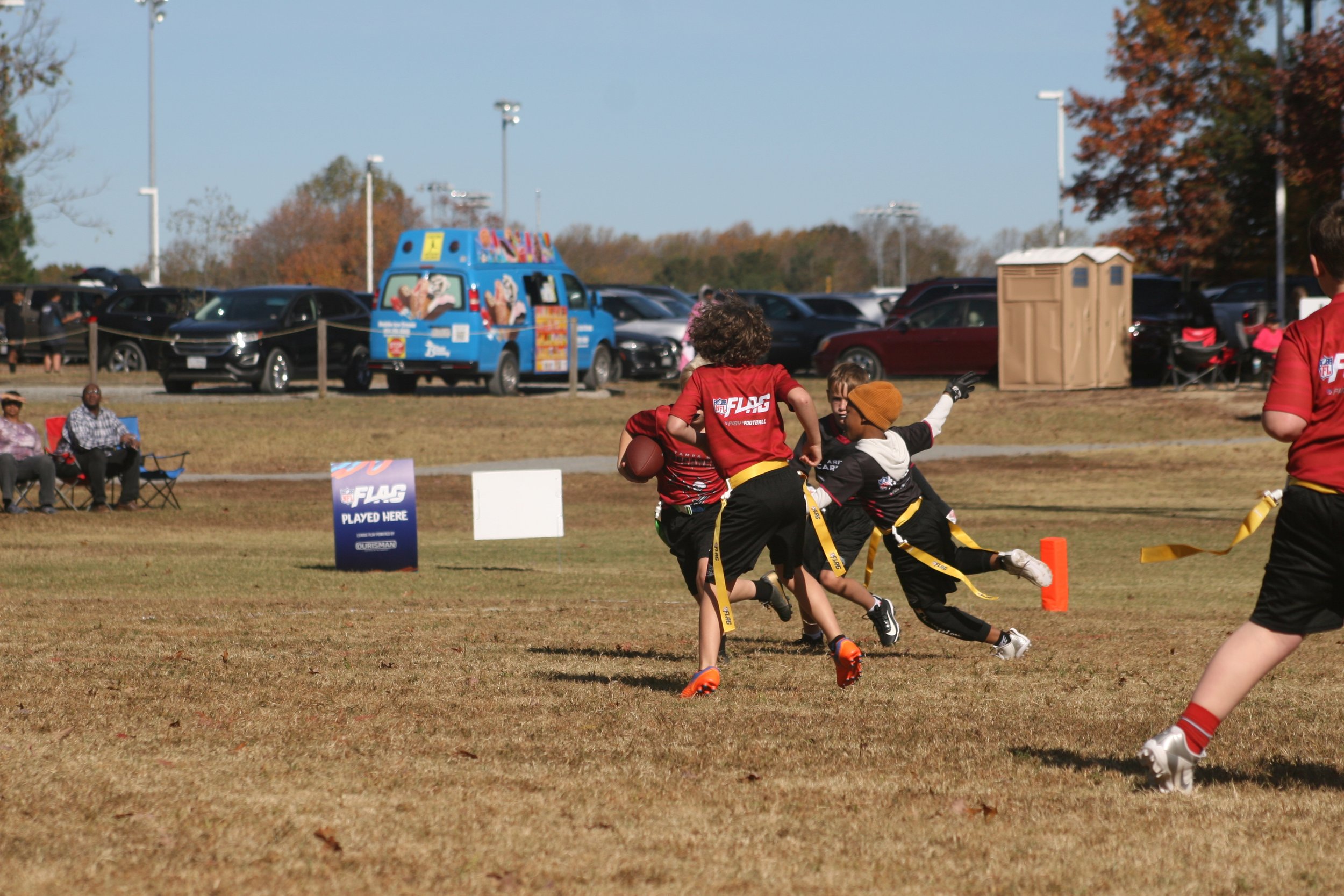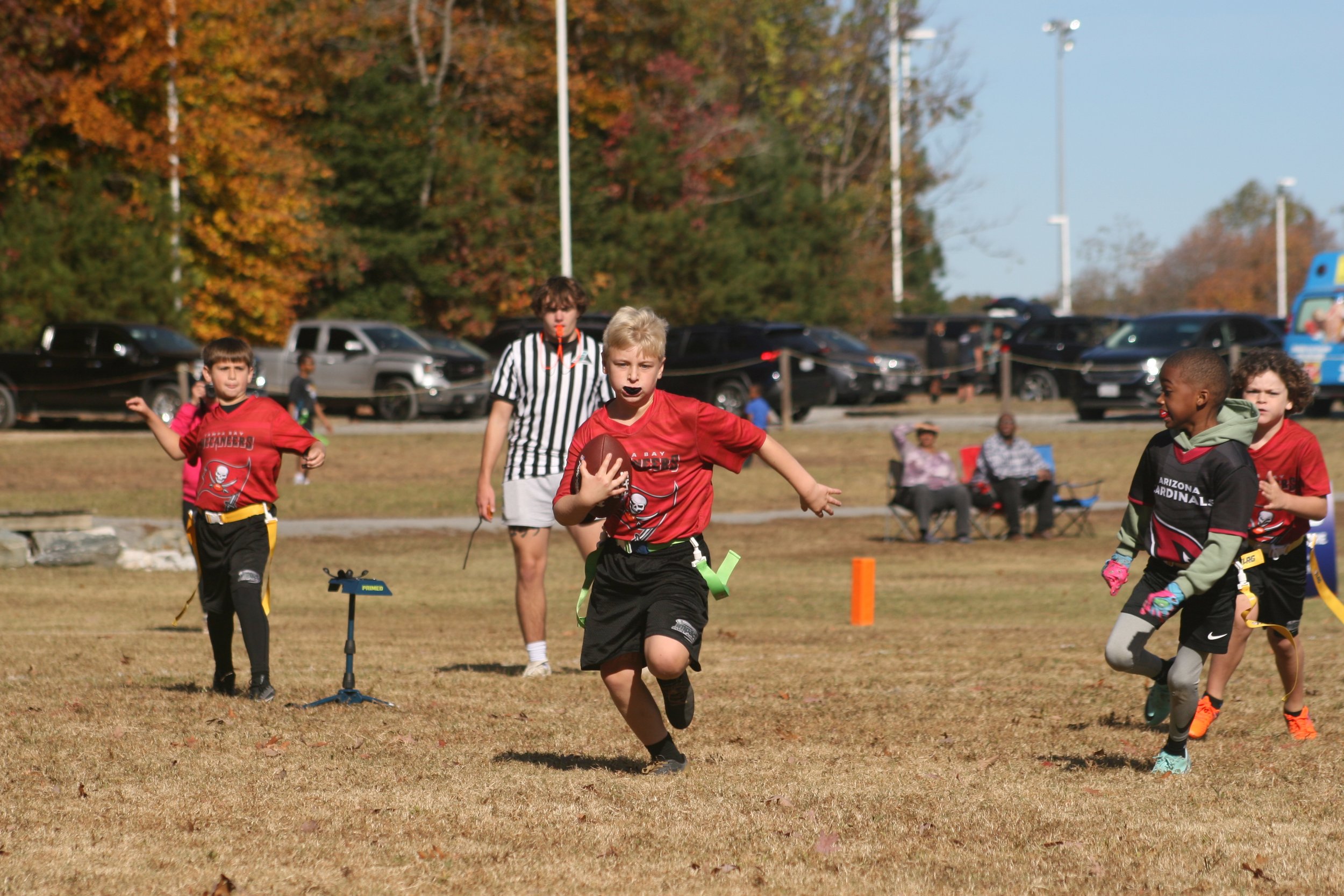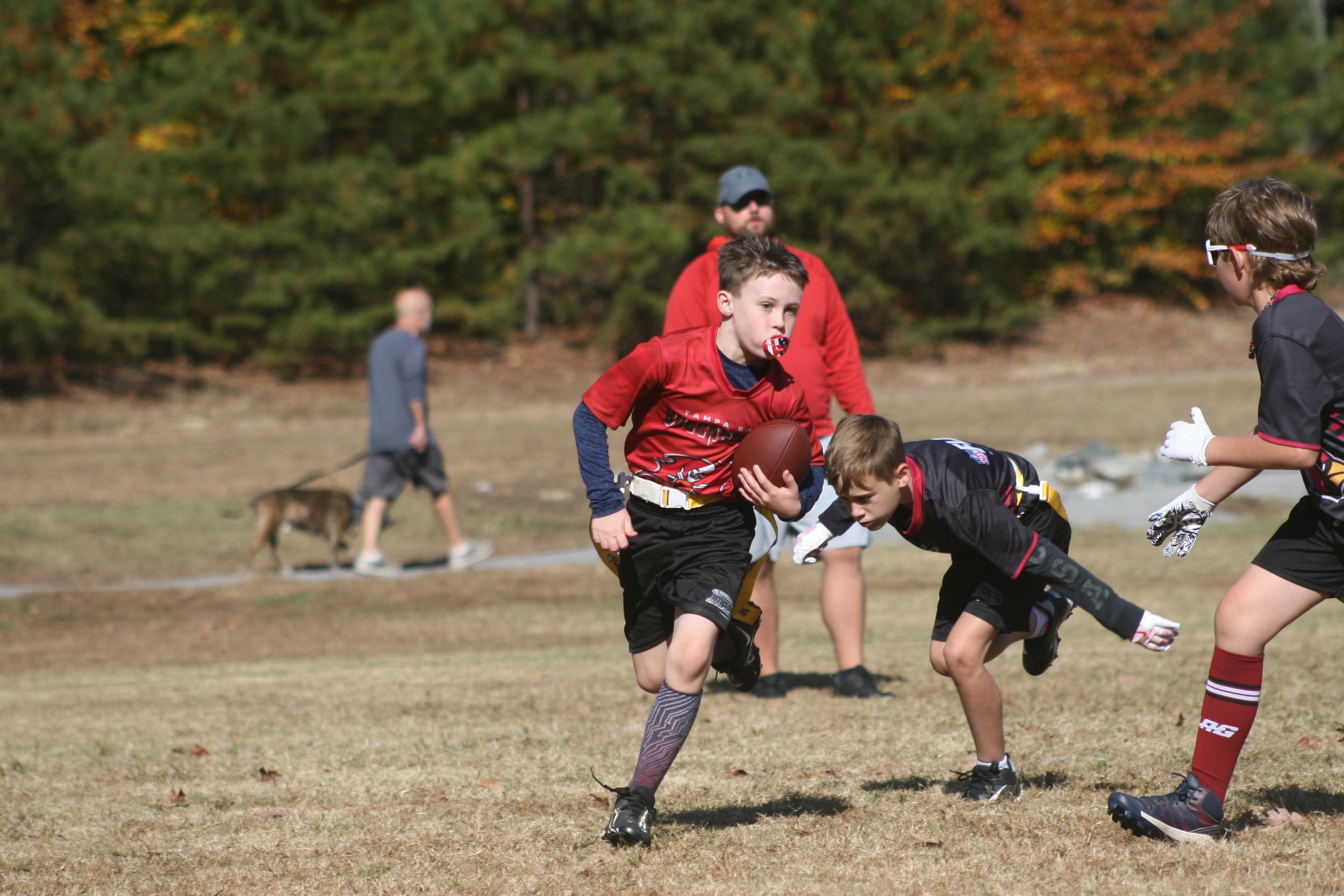
FLAG FOOTBALL
Flag Football: League Information
As flag football gains recognition on the global stage, especially with its inclusion in the 2028 L.A. Olympics, many parents are exploring it as a safer alternative to traditional tackle football. New leagues and school teams are forming across the country, making flag football more accessible than ever for young athletes. Here’s what parents and players can expect when they join this increasingly popular sport.
Why Flag Football is Great for All Ages
One key distinction in flag football is the absence of tackling. Instead, players halt the ball carrier by pulling flags attached to their waist, a feature that makes it particularly appealing for parents, especially those with younger children.
Flag football also offers long-term play opportunities, with teams available for both middle and high school students. It’s a fantastic way for kids of all ages to develop essential skills like teamwork, speed, and agility.
Focus on Skill Development
Flag football emphasizes agility, quick decision-making, and speed. Players learn important fundamentals, such as ball-handling, route running, and understanding plays on both offense and defense.
Coaches in flag football prioritize skills in passing, positioning, and strategic thinking, with an emphasis on speed and spatial awareness rather than physical contact.
Unique Game Rules
Flag football differs from tackle football in a few notable ways, with certain rules modified for younger age groups to make the game more accessible. Here’s an overview of some key differences:
Team Sizes: Younger teams usually have 4-5 players on the field, while older teams may field up to 7.
No Blocking: Physical blocking is not allowed.
Spotting the Ball: The ball is placed where the ball carrier’s feet are when the flag is pulled, not where the ball itself is.
No Fumble Returns: If the ball is fumbled, it’s placed at the spot where it lands.
All Players Eligible: Every player can catch a pass.
No-Run Zones: Some areas, like the last 5 yards before the end zone, restrict running plays.
Scoring:
Touchdown: 6 points
Extra Point: 1 point (from a 5-yard pass play for older age groups)
Two-Point Attempt: 2 points (from the 12-yard line)
Safety: 2 points
Extra Point Attempt Return: 2 points (for intercepting a pass and returning it for a touchdown)
Despite these differences, flag football still captures the excitement kids love from watching football with their family. It’s a fantastic way to stay active, enjoy the game, and foster a lasting love for sports.
Spring and Fall NFL Flag Football Leagues
Program Overview
Join Impact Sports Academy's NFL Flag Football Leagues! Here’s what players can look forward to:
What’s Included: NFL Flag reversible jersey, shorts, and flag.
Season Format: 7-game regular season, including playoffs and Super Bowl
Game Format: 5v5 flag football.
Practice: Held one hour before each game.
No Tryouts or Drafts: Teams are formed based on "friend" or "coach" requests. Single players will be placed on teams with similar school, neighborhood, or organization connections.
Coaches: Volunteer-based, provided by the community (not Impact staff).
Game Times: Depending on the season - Spring: Late afternoon or early evening. Fall - Early to mid mornings
Why Join?
Our flag football program is designed to offer fun, community connection, and a competitive edge—all in a safe and supportive environment. Perfect for beginners and experienced players alike!
Refund Policy
Full Refunds: Available if uniforms have not yet been ordered.
Individual Basis Refunds: Considered after uniform orders are finalized.
Programs
Become a Coach
Coaches Corner
Parent Resources (FAQs)
Flag Football Blogs









































































































































































































